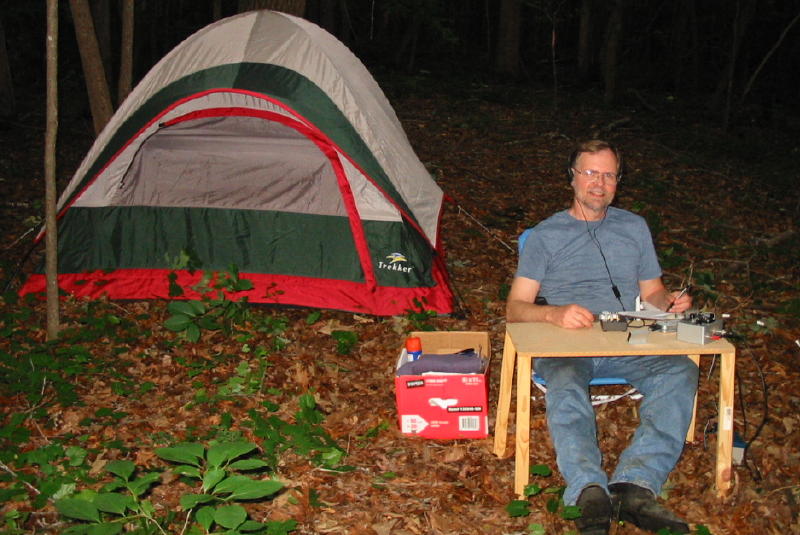
Revised 6-28-2011
Field Day is by far the most popular ham radio operating event in the U.S. and Canada, with tens of thousands of hams participating each year. It is always held on the fourth full weekend in June.
Its basic theme is to set up and operate a ham radio station, possibly including multiple operating positions, under simulated emergency conditions. It is also a contest, with the objective to contact as many other North American stations as possible.
I've been a ham radio operator since I was in high school and have participated in many Field Days. This year I chose to operate the event as a solo operator using a low power (QRP) battery operated radio. Although hams can use many communications modes including voice and data, my all-time favorite mode is Morse code (CW). So by choice, my operation this year was 100% CW.
A wooded area in Banks County, Georgia, near the town of Homer was selected
as the station site. Note all of the tall trees.

The antenna selected for this event was a homebrew wire antenna, an off-center fed dipole approximately 136 feet in length, fed with open-wire ladder transmission line. This antenna type is sometimes called a modern Windom, as it is loosely based on the classic Windom design from the 1920's that used a single wire feed. A key advantage of this antenna is its ability to be used on multiple ham frequency bands with a reasonable VSWR. The open-wire ladder transmission line has exceptionally low loss. A balun was not used with this antenna.
This particular tree was selected to support the antenna.

A fishing rod was used to cast a weighted line over the selected support
branch. Then a nylon cord was tied to the end of the fishing line and pulled
over the branch as seen in the zoomed photo below. Finally the antenna was tied
to the nylon cord and hoisted up.
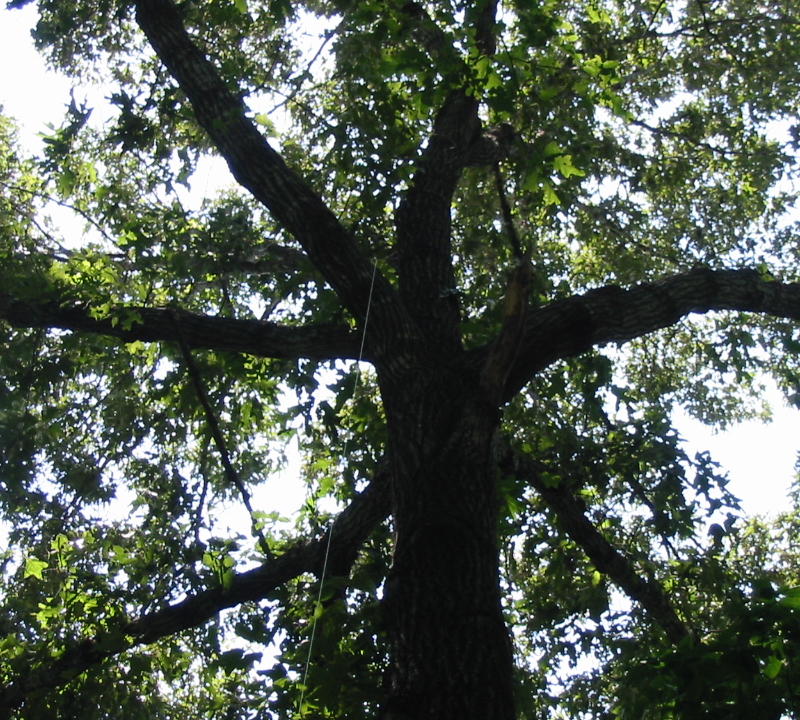
The antenna was configured as an inverted-V with the apex at the nylon support cord. The antenna wire ends were attached to lengths of nylon cord that were then tied to other conveniently located trees.
The campsite was set up after the antenna was erected. During the daylight
hours I operated the station outside. After dark, the gear was moved inside the
tent and operation continued there. A mini-maglite suspended from the top
center of the tent functioned as a lamp.
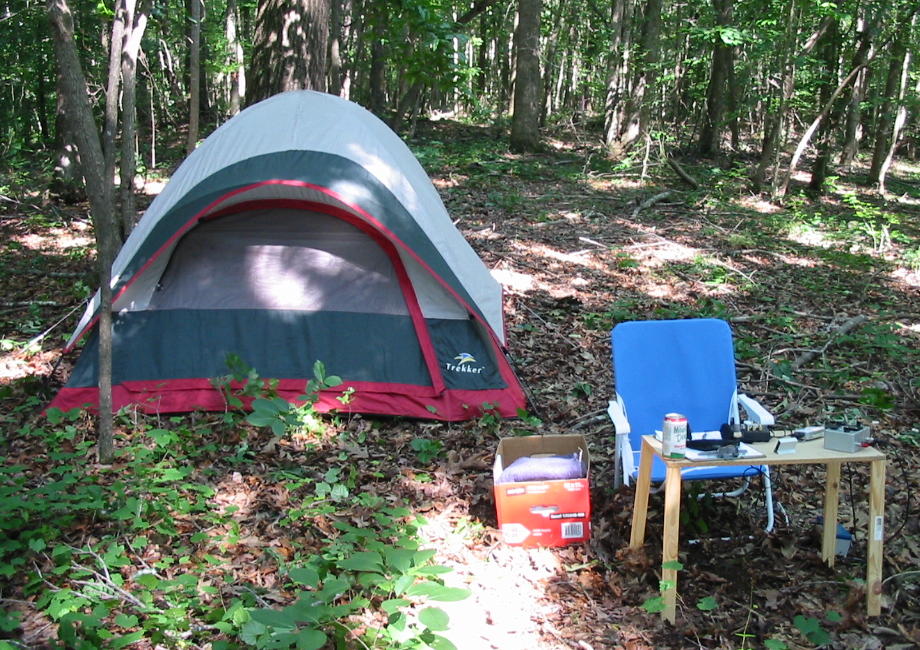
Here is a close-up view of the radio operating table.

Morse code is being sent with my right hand, using a paddle. This particular paddle was handcrafted by Larry, N0SA.
The box on the table corner is an antenna tuner. It matches the antenna impedance to 50 Ohms, as needed by the radio. I built this tuner from scratch back in the mid-1980's and it has worked well over the years.
My left hand is operating the radio. This is a complete transmitter and receiver (transceiver) capable of six-band operation. The transmitter produces several watts of output power and the receiver is a very sensitive superhet with a crystal IF filter. It's all packed in a metal enclosure the size of an Altoids tin.
Here is an inside view of the radio, a model ATS-3B designed by Steve,
KD1JV. Steve is an exceptional designer who produces a limited number of QRP
ham radio kits periodically and sells them on
his website. This kit came with the
bare circuit board and all parts shown except the enclosure. Note the extensive
use of surface mount components. Reviews of this model can be found
here.
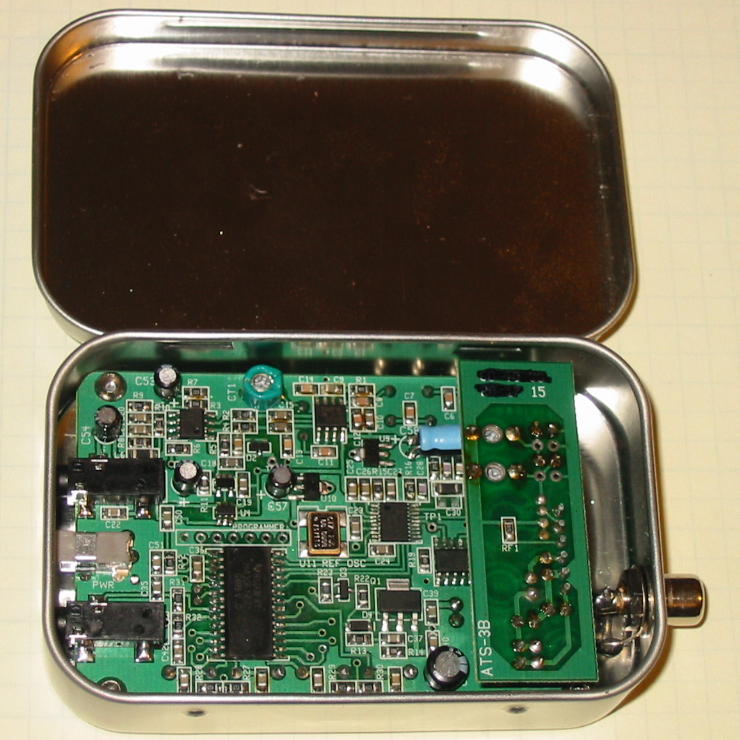
This photo was taken during the contest. The 12 Volt battery on the ground
provided plenty of power for the entire operating period. It is a used pull-out
from a computer uninterruptible power supply and was purchased at a flea
market.
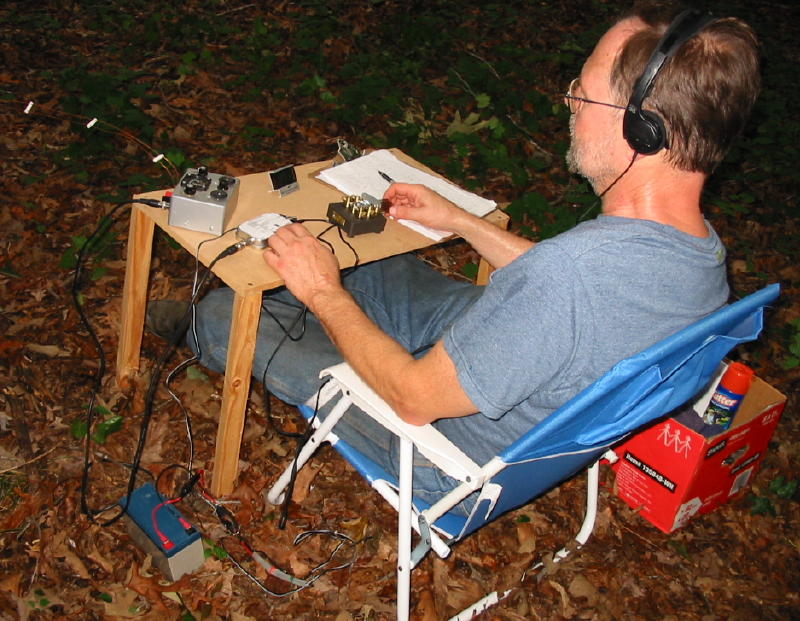
Field Day 2011 was wonderful fun. I had a great time setting up and
operating the radio while camping. Many contacts were made all over North
America, and one contact was even made with a ham in Germany.
